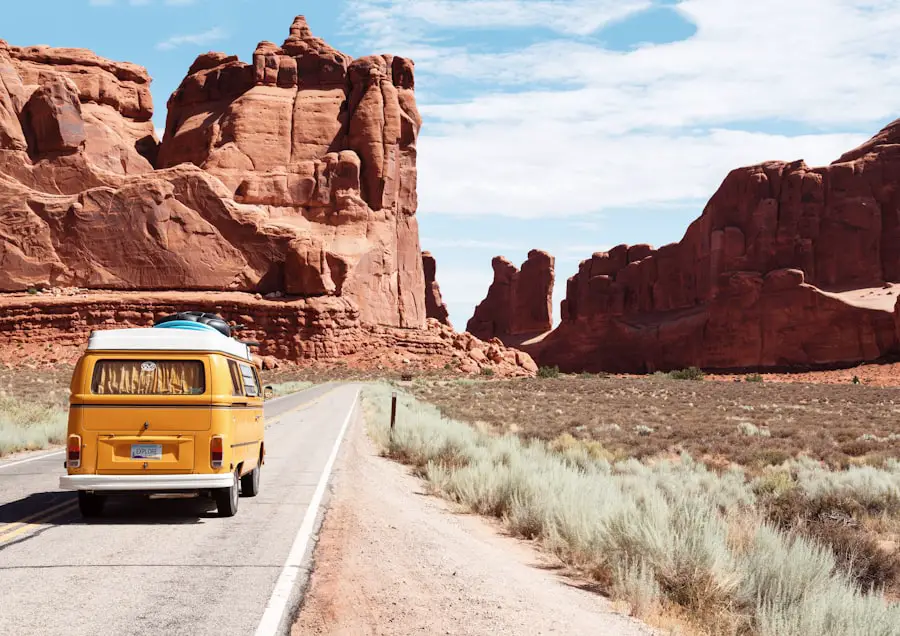Nestled on the northeastern coast of South America, Guyana is a country that often flies under the radar for many travelers. Bordered by Venezuela to the west, Brazil to the south, and Suriname to the east, it boasts a unique blend of cultures, languages, and landscapes. The capital city, Georgetown, is known for its colonial architecture and vibrant markets, while the vast interior is characterized by dense rainforests, savannas, and an array of rivers.
Guyana is the only English-speaking country in South America, a remnant of its colonial past under British rule, which adds a distinct flavor to its cultural tapestry. The nation is rich in biodiversity and natural resources, making it a haven for eco-tourism enthusiasts. With its lush landscapes and diverse ecosystems, Guyana is home to numerous species of flora and fauna, some of which are endemic to the region.
The country’s commitment to preserving its natural heritage is evident in its numerous protected areas and national parks. As travelers seek more authentic experiences away from the typical tourist traps, Guyana presents an opportunity to explore unspoiled nature and engage with local communities in a meaningful way.
Key Takeaways
- Guyana is a diverse and culturally rich country located on the northern coast of South America, known for its lush rainforests, diverse wildlife, and vibrant culture.
- The weather in Guyana is tropical, with a hot and humid climate year-round, and two distinct seasons: a rainy season from May to August and a dry season from September to April.
- The peak tourist season in Guyana is during the dry season, from September to April, when the weather is more favorable for outdoor activities and wildlife spotting.
- Off-peak travel to Guyana is during the rainy season, from May to August, when the country is less crowded, and travelers can take advantage of lower prices and deals on accommodations and tours.
- Guyana hosts a variety of special events and festivals throughout the year, including Mashramani in February, Phagwah in March, and the Rupununi Rodeo in May, offering visitors a chance to experience the country’s vibrant culture and traditions.
Weather and Climate in Guyana
The Wet Season
The wet season typically runs from May to August and again from November to January, during which heavy downpours can occur almost daily. This period is marked by lush greenery and vibrant wildlife activity, making it an excellent time for nature enthusiasts to witness the country’s rich biodiversity.
The Dry Season
Conversely, the dry season spans from late August to early November and from late January to April. During this time, temperatures can soar, often reaching the mid-30s Celsius (mid-90s Fahrenheit). The dry season is generally considered more comfortable for outdoor activities, as the weather is less humid and there are fewer rain interruptions.
Planning Your Trip
However, even during the dry months, brief showers can occur, so it’s wise for travelers to be prepared for sudden changes in weather. Understanding these climatic patterns is crucial for planning a trip that maximizes outdoor exploration while minimizing disruptions from rain.
Peak Tourist Season in Guyana

The peak tourist season in Guyana typically coincides with the dry months, particularly from late December through early April. This period attracts visitors seeking to escape colder climates and enjoy the warm tropical weather. During these months, popular attractions such as Kaieteur Falls—one of the world’s tallest waterfalls—experience a surge in visitors.
The falls are particularly stunning during this time as the water flow is often at its peak due to seasonal rains earlier in the year. Accommodations and tours can become quite busy during peak season, leading to higher prices and limited availability. Travelers planning to visit during this time should book their accommodations well in advance and consider guided tours to ensure they can experience all that Guyana has to offer without missing out on key attractions.
Additionally, local festivals and events often take place during this season, providing an excellent opportunity for visitors to immerse themselves in Guyanese culture while enjoying the vibrant atmosphere.
Off-Peak Travel to Guyana
| Month | Number of Visitors | Average Hotel Price |
|---|---|---|
| January | 500 | 100 |
| February | 550 | 110 |
| March | 600 | 120 |
Traveling to Guyana during the off-peak season can be a rewarding experience for those willing to embrace the rain. The wet season, while characterized by frequent showers, offers a unique perspective on the country’s lush landscapes and thriving ecosystems. The rain transforms the environment into a vibrant tapestry of colors, with flora blooming in abundance and wildlife becoming more active as they seek food sources.
Birdwatchers will find this time particularly appealing as migratory birds flock to the region. Moreover, visiting during off-peak times often means fewer crowds at popular sites like the Iwokrama Rainforest or the Rupununi Savannah. This allows for a more intimate experience with nature and local communities.
Travelers can take advantage of lower prices on accommodations and tours, making it an economical choice for budget-conscious adventurers. Engaging with local guides during this quieter period can also lead to more personalized experiences and deeper insights into Guyanese culture and traditions.
Special Events and Festivals in Guyana
Guyana’s cultural diversity is celebrated through various festivals and events throughout the year, reflecting its rich heritage influenced by Indigenous peoples, African traditions, Indian customs, and European colonial history. One of the most significant events is Mashramani, celebrated on February 23rd each year to commemorate Guyana’s Republic Day. This festival features vibrant parades filled with colorful costumes, music, dance, and cultural performances that showcase the nation’s artistic talents.
Another notable event is Phagwah or Holi, celebrated by the Indo-Guyanese community in March. This festival of colors marks the arrival of spring and involves joyous celebrations where participants throw colored powders at each other while singing traditional songs. It’s a lively event that attracts both locals and tourists alike, providing an opportunity for cultural exchange and understanding.
Additionally, the Guyana International Conference Center hosts various events throughout the year that highlight local art, music, and cuisine, further enriching the cultural landscape of this fascinating country.
Wildlife and Nature in Guyana

Guyana is often referred to as one of the last frontiers of untouched wilderness in South America. Approximately 80% of its landmass is covered by pristine rainforest, which serves as a habitat for an astonishing variety of wildlife. The country is home to over 1,000 species of birds, including the majestic harpy eagle and numerous toucan species.
Birdwatching enthusiasts flock to locations like the Kanuku Mountains or the Essequibo River basin to catch glimpses of these avian wonders. In addition to birds, Guyana’s rainforests are teeming with other wildlife such as jaguars, giant river otters, capybaras, and countless species of reptiles and amphibians. The Iwokrama Rainforest Reserve is a prime example of conservation efforts in action; it serves as both a research site and a tourist destination where visitors can engage in eco-friendly activities like canopy walks or guided wildlife tours.
The diverse ecosystems found within Guyana’s borders make it an ideal destination for nature lovers seeking adventure off the beaten path.
Budget Travel Tips for Guyana
Traveling on a budget in Guyana is entirely feasible with some planning and resourcefulness. One effective way to save money is by opting for local transportation methods such as minibuses or shared taxis instead of private transfers or rental cars. These options not only reduce travel costs but also provide an authentic experience as you interact with locals during your journeys across towns and rural areas.
Accommodations range from budget hostels to mid-range hotels; however, travelers can find affordable guesthouses or homestays that offer a more personal touch while supporting local families. Eating at local markets or street vendors can also significantly cut down on food expenses while allowing you to savor traditional dishes like pepperpot or roti without breaking the bank. Additionally, many natural attractions have low entrance fees or are free to access; taking advantage of these opportunities can enhance your experience without straining your wallet.
Conclusion and Final Tips for Traveling to Guyana
As travelers consider their next adventure destination, Guyana stands out as an underappreciated gem filled with natural beauty and cultural richness. To make the most of your trip, it’s essential to plan ahead by researching local customs and traditions that may enhance your experience. Engaging with local communities not only enriches your understanding of their way of life but also fosters meaningful connections that can last beyond your visit.
When packing for your journey, consider lightweight clothing suitable for warm weather along with sturdy footwear for exploring rugged terrains. A good insect repellent is also advisable due to the presence of mosquitoes in certain areas. Lastly, remain open-minded about your travel experience; embracing spontaneity can lead to unexpected adventures that make your trip truly memorable.
With its breathtaking landscapes and welcoming people, Guyana promises an unforgettable journey for those willing to explore its depths.
FAQs
What is the best time to travel to Guyana?
The best time to travel to Guyana is during the dry season, which runs from mid-September to mid-November and from mid-February to mid-April.
What is the weather like in Guyana during the best time to travel?
During the dry season, the weather in Guyana is typically warm and sunny, with lower humidity and minimal rainfall.
What are the main attractions to visit in Guyana during the best time to travel?
Some of the main attractions to visit in Guyana during the best time to travel include Kaieteur Falls, Iwokrama Forest, Shell Beach, and the Rupununi savannah.
Are there any specific events or festivals to attend during the best time to travel to Guyana?
During the dry season, visitors to Guyana can attend events such as Mashramani, which is a national festival celebrating Guyana’s Republic Day, as well as various cultural and music festivals.
What should I pack for a trip to Guyana during the best time to travel?
When traveling to Guyana during the best time to visit, it is recommended to pack lightweight and breathable clothing, sunscreen, insect repellent, and comfortable walking shoes for outdoor activities.
